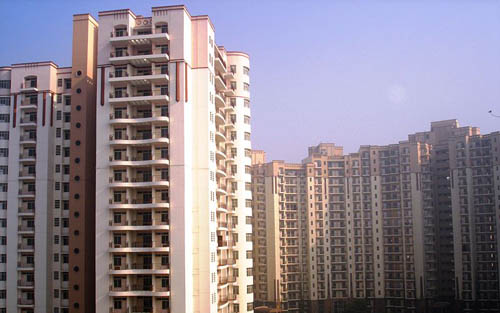
ASSOCHAM calls for planned and orderly growth of real estate industry
The Associated Chambers of Commerce and Industry of India (ASSOCHAM) has called for a strong and transparent regulator for the real estate sector for an orderly growth.

The Associated Chambers of Commerce and Industry of India (ASSOCHAM) has called for a strong and transparent regulator for the real estate sector for an orderly growth.

Chinese officials are blaming the speculators for soaring property prices and have announced to build 36 million affordable homes over the next five years.

The Union Budget 2025, ahead of a few significant Assembly Elections, quite obviously aimed at headline management & garnering likes. And to a large extent the Finance Minister & Modi Government succeeded in this, since the most vocal middle class of India finally got something to cheer about. However, the larger issue is whether the Personal Income Tax exemption level up to an income of INR 12 lakh going to change the household realities of the shrinking middle class of India. More importantly, will it lead to consumption and asset creation, and that too of a high value asset like real estate.

Can Union Budget 2025 fix the larger problems afflicting the business of Indian real estate? This question is more relevant than asking to what extent the Union Finance Minister will fulfill the wishes of the sector. This is because the real estate has largely been ignored, heavily taxed, and least considered in the budget of last few years. Irony is that for some strange reasons the stakeholders who have a large wish list on the eve of Union Budget every year, justify the sector being ignored in the post budget analysis.

The outlook of the Indian real estate on the eve of 2025 could confuse any neutral analyst. But for the insider analysts who are actually stakeholder-cum-expert, it is like another new year with hopes and promises galore. The stakeholders are so upbeat that all the industry reports are projecting a bullish upcycle to continue for the next few years, thus taking Indian real estate to a valuation of $10 trillion by 2047. Track2Realty finds that the ground reality for a commo0n man looking for a house in his affordable budget stands in contrast.

At a time when there is a mad rush to launch new projects in & around the airports across the cities of India, a developer in Bengaluru opted to go in the diametrically opposite direction. Prima facie, what appeared to be a case of finding a better or affordable land parcel in that given location of South-West Bengaluru had a strategy that very few adopt in the business of Indian real estate. The strategy to define demand through scientific research. The demand in the market was assessed with consumer psychograph study – what consumers want; what they need; where are the gaps; and how a new housing project could fill in that gap.

Equity capital inflows touched USD 8.9 billion between January and September, registering a 46% Y-o-Y growth. The strong momentum in deal volume continued, with about 200 deals reported during this period, compared to 151 deals in the same period last year. The average deal size also increased to nearly USD 45 million in the first nine months of 2024 from about USD 36 million in 2023. Mid-sized deals, ranging between USD 10-50 million, represented 56% of the total investment inflows during this period.

RERA is yet again under the scanner after the Supreme Court of India questioned whether it is a rehabilitation center of ex bureaucrats. The functioning and performance of RERA, or rather lack of it, has been challenged at each and every level in now nearly 8 years of its existence. A Track2Realty report. Wait! I am not giving any opinion. My opinion is already there in the public domain. Now the Apex Court in the country, the Supreme Court of India is saying so. I have always maintained that the very purpose of RERA was defeated when the ex-Bureaucrats were made the Chairman and members.

The western cities of Ahmedabad and Mumbai, along with the southern tech hub of Bengaluru, all experienced healthy price appreciation in the 15-21% range whereas Chennai in south and Kolkata in east saw robust growth of 22% compared to the previous year, indicating strong economic activity and housing demand in these metros. This trend points to sustained demand in these economically vital centers. Pune, often seen as a more affordable alternative to Mumbai, also saw an 18% increase, suggesting it’s maintaining its appeal for homebuyers while still seeing significant price growth.

This long-term growth in real estate is underpinned by six salient growth levers which includes, rapid urbanization, infrastructure development, digitalization, demographic shifts, sustainability and investment diversification; all of which will form the bedrock for a quantum leap in Indian real estate by 2047. These long-term growth ingredients will be pivotal in the expansion of Indian real estate – from under a trillion currently, to potentially a USD 10 trillion market by 2047, accounting for a 14-20% share in the country’s GDP.
